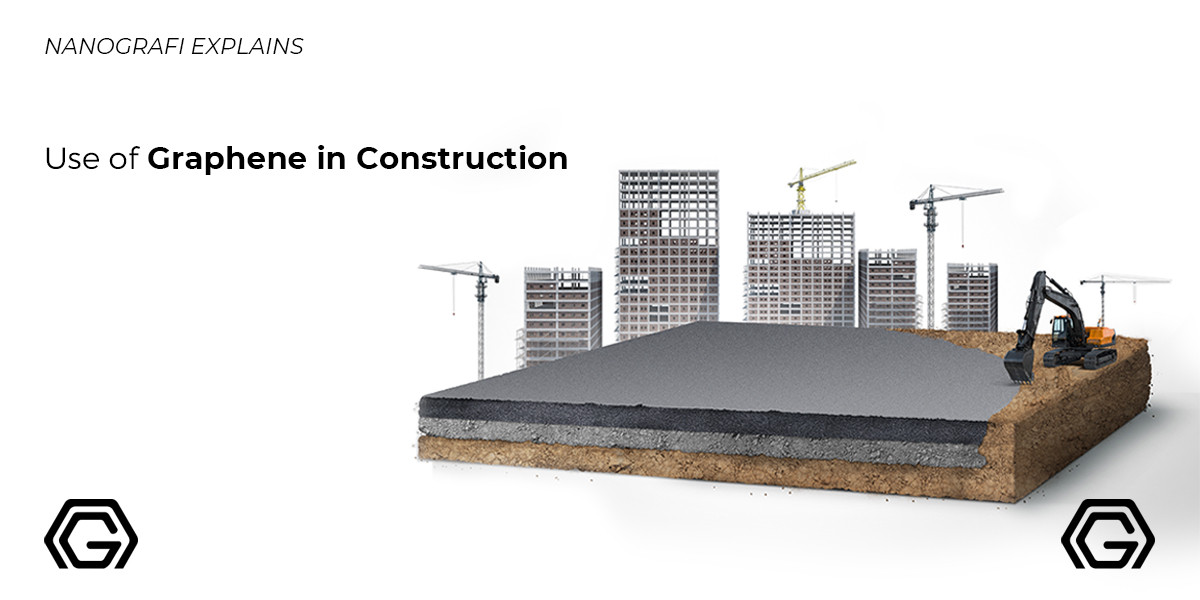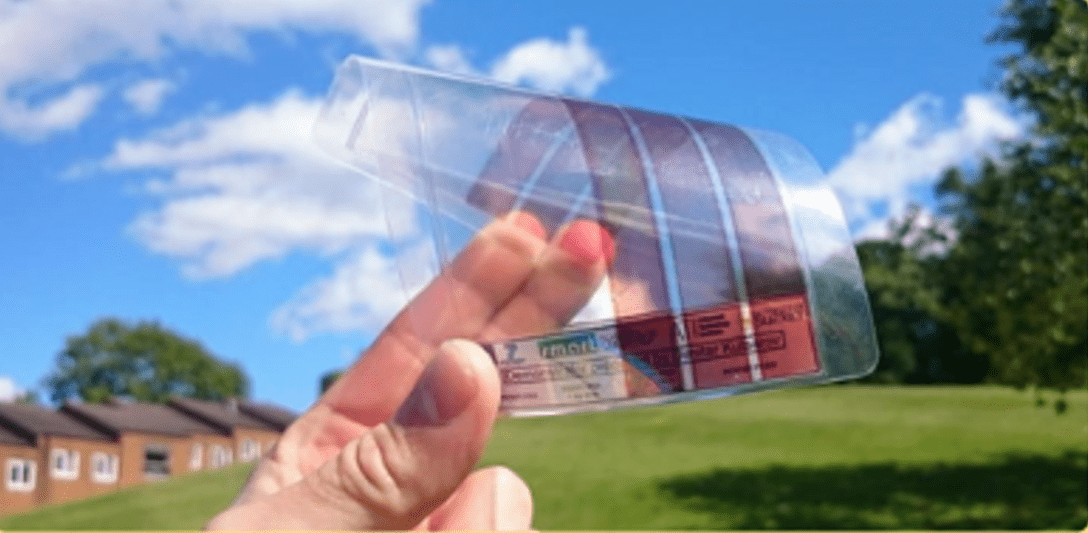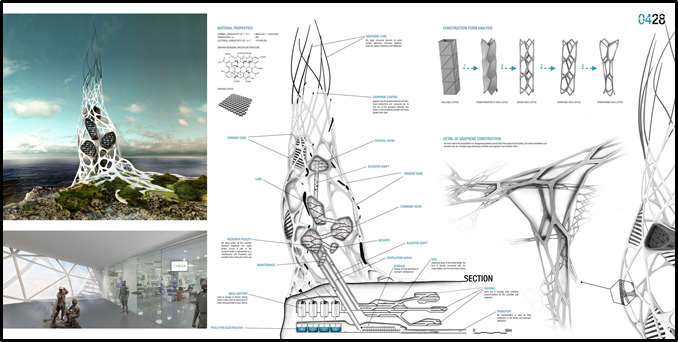Use of Graphene in Construction
Graphene is a single layer of carbon atoms arranged in a two-dimensional honeycomb lattice. This wonder material boasts remarkable properties, including unparalleled strength, electrical conductivity, and flexibility.
In construction, graphene's superior qualities are harnessed to enhance building materials like concrete and steel. Its integration increases tensile strength, reduces weight, and offers better corrosion resistance. Moreover, graphene-infused coatings can provide surfaces with advanced protective properties, including waterproofing and UV resistance. As sustainability becomes crucial, the integration of graphene in construction materials signifies a revolutionary shift towards efficient and durable infrastructure. To discover top quality graphene and graphene-based materials and cutting edge solutions for advanced technologies, visit Nanografi.
Introduction
In the construction industry, graphene can be used to improve the performance of a variety of materials, including concrete, steel, and asphalt. For example, graphene can be added to concrete to improve its strength, durability, and fire resistance. It can also be added to steel to improve its strength and corrosion resistance. And it can be added to asphalt to improve its strength, durability, and resistance to water damage. Graphene also works in water filtration.
In addition to improving the performance of existing materials, graphene can also be used to create new types of construction materials with unique properties. For example, graphene can be used to make self-healing concrete that can repair itself after damage. Graphene can also be used to make lightweight and strong composites that can be used in a variety of applications.
The use of graphene in construction is still in its early stages, but it has the potential to revolutionize the industry. Graphene-based materials can make buildings stronger, more durable, and more energy-efficient. They can also help to reduce the environmental impact of construction.
Properties of Graphene
Graphene has a plethora of wonderful qualities that make it gradually gain the popularity of super material. Many industrial sectors have already taken a look. Construction is perhaps one of the best matches. It could serve to improve energy efficiency and reduce the environmental impact of buildings. Graphene has some brilliant properties that no other material has.
Let’s discuss them in detail:
- Graphene is a great conductor of electricity
Graphene is able to conduct electricity a lot better than copper because it needs much less electricity to transport the same amount of energy as the latter. At the same time, it allows you to convert the sun's rays into electricity instantly because it has the ability to capture the light and convert it into energy. On the other hand, it is also capable of transporting heat better than any other material known so far. To learn more about how graphene is used in electronics, read the blog.
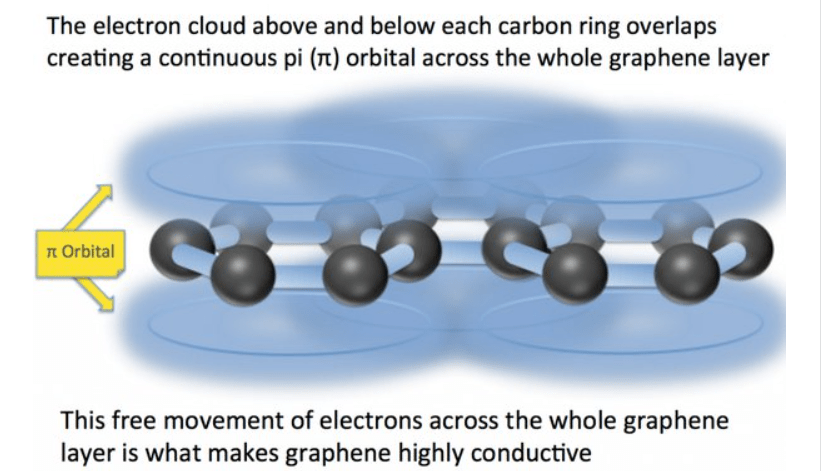
Figure 1. The source of graphene's properties.
- Graphene has incredible hardness
It is about 200 times harder than steel. That is why we talk about it being resistant to wear and capable of withstanding high loads. This makes it especially convenient to withstand large volumes of weight. It is also very resistant to both friction and weather conditions. In this way, materials made from graphene will last over time, much more than their predecessors.
- Graphene has great flexibility
Graphene is extremely flexible, a quality that makes it a very moldable material and therefore suitable for many uses and applications. On the other hand, it is very light, much more than aluminum. And, in addition, it is transparent. This is perhaps not a quality but a description that together with its flexibility makes it ideal for manufacturing of computer screens or other electronic devices, especially computers, smartphones or tablets.
- Graphene is able to react with other substances
This property allows new materials to be created from the initial structure of the same, with the possibility of increasing its applications. In addition, according to research by a team of Spanish scientists, it can absorb all the light in its atomic monolayer, being able to capture the light of different colors, which make it ideal for the development of photosensitive materials for application in high efficiency photovoltaic solar collectors, due to that, the sensors that are currently manufactured are developed with semiconductor materials such as silicon, so that they can only capture and absorb a part of the infrared radiation received from the sun.
If you're interested in Graphene's use in solar cells, you can read our blog.
- Transparency and Lightness
Its use as a future material with structural character is reinforced by its extreme lightness. The idea of being able to create singular structures that are much stronger and lighter is an unquestionable advantage in the architectural design process and a significant reduction in construction costs in the case of singular constructions.
Its transparency and flexibility, on the other hand, would come to complete the catalog of applications as wrapping material for the property. In this case, the transparent and flexible surface makes it much more economical, resistant and versatile than the current use of tempered glass parts.
- Graphene’s Resistance to ionizing radiation and phytosanitary properties
Its resistance to ionizing radiation could be especially interesting in areas such as sanitary where the use of graphene as an insulation material for the radiation emitted by radiotherapy or magnetic resonance equipment would mean a significant saving in the economic cost of construction of future clinics or hospitals. Explore everything about Graphene Radiation Shielding.
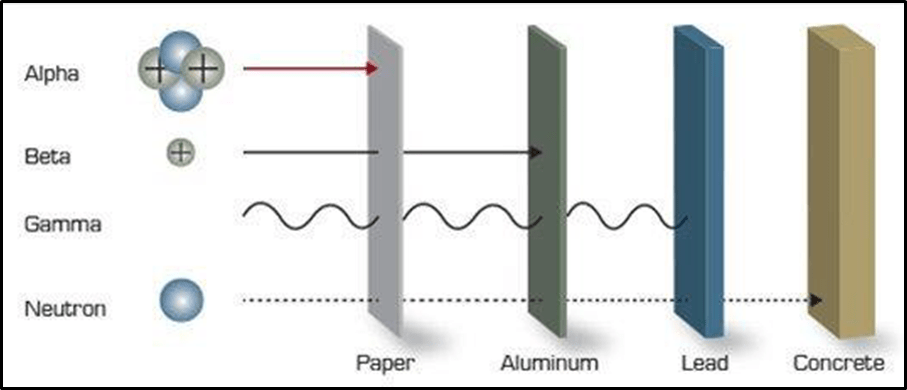
Figure 2. Schematic illustration of some radiation shielding materials.
Graphene and Its Applications in Construction: Insulations and High-efficiency Equipment
It is an extremely strong, elastic material and its innumerable and amazing qualities have given it the name of the "miracle material". Noted by many experts as the ingredient that will revolutionize electronics, it is also expected to reach architecture and engineering to dethrone all-powerful concrete and even the toughest steel.
Among the applications of graphene in the field of construction, and in particular to improve energy efficiency in buildings, the following materials obtained from it stand out:
- Graphene has great efficiency against construction applications such as concrete. The most important applications are in pillars, pipes, roads, concrete screens and dams, elements that require greater durability over time, this additive reduces the use of cement that pollute severely, which is good for the environment and modifies the procedure of traditional construction of materials with concrete. To get more information about nanotechnology in construction, visit Blografi.
- Graphene Aerogel the lightest and most efficient thermal insulation material, which allows its application to obtain high-performance energy-saving solutions. Sheets of about 5 mm thick of graphene airgel can be used as insulation, with which we are talking about much smaller thicknesses than traditional insulators. This allows a great saving of space and improvement of energy efficiency, not only in the construction of buildings but also in the manufacture of solar panels. In addition to its minimum thickness, it is a very flexible and strong material, highly resistant to mechanical actions and easy installation.
- Graphene is also used in the manufacturing of double-tube solar panels with the aim of isolating the connection between the panel and the water storage tank.
- Graphene is also used in making the coatings of nanoparticles, for coating and protection of tubes, thereby improving their efficiency and duration and protecting themselves from the action of external agents such as weather, ultraviolet rays, and other types of actions.
- Graphene has an important role in manufacturing photovoltaic solar panels with cells made with graphene airgel, given its high performance by absorbing all sunlight and its performance is good as a photosensitive material, facilitating the assembly and installation of the same as being a lightweight material, increasing its life and improving its efficiency and performance and reducing costs for companies. Silicon-based wafers are also present in photovoltaic applications. You can read our blog to learn more about what they are.
- It also manufactures connection cables in highly efficient solar panels. The lower conductivity rate of the airgel make it very useful and especially in solar installations.
In addition to these applications, the field of nanotechnology presents many others that can be applied within the construction, which can help us improve the quality of the finished building as well as in that it can be energy efficient and above all respectful with the ambient environment. Some of its applications are aimed at improving the thermal insulation of building envelopes with minimum thicknesses, manufacturing materials or alloys resistant to corrosion, which do not rust, durable, resistant to the action of fire, ease of maintenance and cleaning, etc.
To discover about all the uses and applications of graphene, you can read our most popular blog.
Construction Projects based on Graphene
One of the first projects that were presented in 2011 based on a graphene composite material was the Hydra Skyscraper by a Serbian multidisciplinary study formed by Milos Vlastic, Vuk Djordjevic, Ana Lazovic, and Milica Stankovic.
It was intended due to its high thermal and electrical conductivity, hardness exceeding two hundred times than steel, capturing the energy produced during the thunderstorms and storing the energy produced in mega-batteries located at the base of the building. The project also included a research center, housing, and recreation areas for scientists and their families. You could see the possibilities of a material that is revolutionizing both the field of technology and construction.
Figure 3. The idea of Hydra Skyscraper Project.
Later on, the concept “Graphene Loft” appeared. A different way to the traditional one, improving the use of structural elements, using the hexagon shape as a base, and the strength of graphene and its applications as the main material.
We can recognize that graphene will be the material of the future. The latest studies carried out by some European universities have allowed us to obtain materials that significantly improve the performance of solar collector cells and their efficiency, as a result of these investigations we have been able to obtain materials such as the graphene airgel that is characterized by being a lightweight and highly efficient material as thermal insulation.
Advantages of the Use of Graphene in Construction
Judging by its excellent qualities, after electronics and energy, it is clear that the architecture and construction sectors are the ones that can best take advantage of graphene's potential.
One of the great advantages is that graphene, being composed of carbon, is an organic material which means that it is not only greener but also healthier. One of the disciplines that are also developing it is surgery. The human body does not reject grafts made of this material.
Returning to construction, graphene reacts with other substances, allows the manufacture of materials from combinations. This can greatly improve the performance of some of those materials and even create some new ones by improving their own properties. Graphene helps, for example, fight oxidation, moisture or even fire, since it gives them the properties of resistance and hardness. That is precisely what causes wear or abrasion to not occur.
Not only these qualities are innovative and great. The introduction of graphene in construction provides other great advantages. Its flexibility and high thermal and electrical conductivity save many costs because they improve efficiency in heating and air conditioning systems. In this sense, it can help reduce carbon dioxide emissions into the atmosphere.
Although graphene is still under development, it is undoubtedly the material of the future. Its presence is abundant in nature although it still does not occur on a large scale. However, the forecast is good, it will soon show an even more affordable cost than silicon. Its applications are so varied that it can practically be used to manufacture all kinds of new materials and greatly improve existing ones.
Conclusion
To recapitulate, graphene is the material of the future, with multiple benefits not only at the technological level but also at the level of architecture and construction of buildings. Graphene has been one of the great discoveries of physics in this century and breaks schemes in many sectors including architecture and construction. Its extreme elasticity and hardness accompanied by its magnificent thermal and electrical conduction capacity, make graphene a super material, which can compete with the hardness of a diamond since it is up to 200 times harder than steel. These characteristics have attracted the construction sector. The experts of the construction sector value the revolutionary advantages that this material offers, displacing- the use of traditional materials such as concrete and steel in the long term. Leveraging cutting-edge technologies and superior materials, Nanografi redefines your ventures and catapults your business to novel dimensions.
References
60 Uses and Applications of Graphene – Nanografi - Nanografi Nano Technology. (n.d.). Retrieved February 20, 2019, from https://nanografi.com/blog/60-uses-and-applications-of-graphene-nanografi-/
Everything You Need to Know About Graphene Radiation Shielding - Nanografi Nano Technology. (n.d.). Retrieved February 20, 2019, from https://nanografi.com/blog/everything-you-need-to-know-about-graphene-radiation-shielding/
Graphene Solar Cell Efficiency - Nanografi Nano Technology. (n.d.). Retrieved February 20, 2019, from https://nanografi.com/blog/graphene-solar-cell-efficiency/
Graphene Water Filtration - Nanografi Nano Technology. (n.d.). Retrieved February 20, 2019, from https://nanografi.com/blog/graphene-water-filtration/
Hydra Skyscraper- eVolo | Architecture Magazine. (n.d.). Retrieved February 20, 2019, from https://www.evolo.us/hydra-skyscraper/
Lighter than Air: Aero-Graphenes or Graphene Aerogels - Nanografi Nano Technology. (n.d.). Retrieved February 20, 2019, from https://nanografi.com/blog/lighter-than-air-aerographenes-or-graphene-aerogels/
Role of Nanotechnology in Construction - Nanografi Nano Technology. (n.d.). Retrieved February 20, 2019, from https://nanografi.com/blog/role-of-nanotechnology-in-construction/
Self-healing concret... - Wikipedia. (n.d.). Retrieved February 20, 2019, from https://en.wikipedia.org/wiki/Self-healing_concret...
Silicon-Based Wafer for Best Photovoltaics Applications - Nanografi Nano Technology. (n.d.). Retrieved February 20, 2019, from https://nanografi.com/blog/siliconbased-wafer-for-best-photovoltaics-applications/
The Use of Graphene-Based Materials in Anti-Corrosion Coatings - Nanografi Nano Technology. (n.d.). Retrieved February 20, 2019, from https://nanografi.com/blog/the-use-of-graphenebased-materials-in-anticorrosion-coatings/
Use of Graphene in Electronics - Nanografi Nano Technology. (n.d.). Retrieved February 20, 2019, from https://nanografi.com/blog/use-of-graphene-in-electronics/
Use of Graphene in Solar Cells - Nanografi Blog - Nanografi Nano Technology. (n.d.). Retrieved February 20, 2019, from https://nanografi.com/blog/use-of-graphene-in-solar-cells/
What is Graphene: The Ultimate Guide - Nanografi Nano Technology. (n.d.). Retrieved February 20, 2019, from https://nanografi.com/blog/what-is-graphene-the-ultimate-guide/
Recent Posts
-
Advanced Materials for Unmanned Aerial Vehicle (UAV) Protection Against Laser
Consider a UAV on a critical mission, rendered inoperative by a sudden laser attack. With the increa …26th Jul 2024 -
Simulation and Modeling of Material Properties
Our world is composed of a dazzling array of materials, each with its own unique properties that dic …19th Jul 2024 -
Advanced Coatings for Superior Corrosion and Wear Resistance
Corrosion and wear pose significant challenges across various industries, leading to substantial eco …12th Jul 2024

